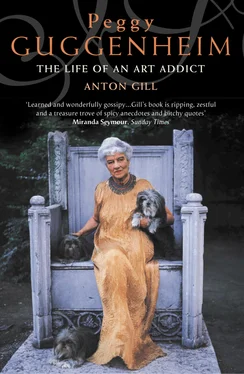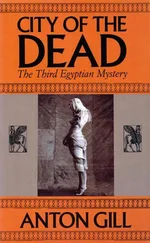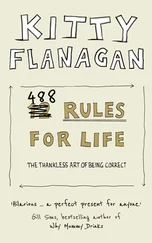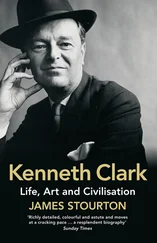Peggy and Laurence met again at a dinner party given by the Fleischmans. At the time he had a minor reputation as an artist and writer, but a much greater one as a man-about-town and roué. He was very popular with women, and when Peggy met him again in Paris he was in the middle of an affair with Helen Fleischman. It was an affair which her husband Leon had encouraged, since the thought of such a thing excited him, and Helen warned Laurence not to flirt with Peggy – for fear of offending Leon. She may, however, also have realised that Laurence found Peggy attractive. Peggy’s dark brown hair was parted at the centre and worn short and waved. Her light blue eyes had a pensive, intelligent look. She was young, very pretty despite her nose, which had not yet coarsened, and had a beautiful, long-limbed body. She was charmingly naïve but eager to learn, and had a private income twice as big as Laurence’s mother’s.
For Peggy, not only was Laurence an artist and a good-looking and charming man, he embodied the cosmopolitan sophistication she admired. He knew Paris backwards. He knew about art, and he had friends in the world of modern art. He wasn’t a callow youth from a similar background to her own, and his world had little connection with Jewish New York. Here was the teacher she sought. They got on very well at dinner. Laurence owed no woman any loyalty at the time, and was well aware of the casual nature of his affair with Helen.
A few days later, Laurence rang the Plaza-Athénée, where Peggy was staying with her mother and Valerie, and asked her out for a walk. Laurence at thirty was still living with his sister and their parents in a large flat close to the Bois-de-Boulogne. Peggy dressed for the date in an outfit ‘trimmed with kolinsky fur’, the most expensive kind of mink, in order to advertise her material charms. She and Laurence walked up the Champs-Elysées to the Arc de Triomphe and then along the Seine. Dropping into an ordinary bistro for a drink in the course of what was a very long walk, Peggy ordered a porto flip – a cocktail which wouldn’t have raised an eyebrow at the Plaza but which hadn’t reached the Left Bank in 1921.
But Peggy had other things on her mind, and didn’t see Laurence as a teacher simply in terms of art. In another passage omitted from the 1960 version of her autobiography she remarks candidly:
At this time I was worried about my virginity. I was twenty-three and I found it burdensome. All my boyfriends were disposed to marry me, but they were so respectable they would not rape me. I had a collection of photographs of frescos I had seen at Pompeii. They depicted people making love in various positions, and of course I was very curious and wanted to try them all out myself. It soon occurred to me that I could make use of Laurence for this purpose.
Unaware of Peggy’s thoughts, but preparing to woo her, Laurence decided to leave the parental apartment and find himself an independent place. He told Peggy his plan, and she immediately suggested that she move in with him and share the rent. Balking at this – even in the progressive and permissive 1920s Peggy was going a bit too fast for his taste – he settled on a room in a hotel in the rue de Verneuil, between the Seine and the boulevard St Germain, and only a block south of the bohemian rue de Lille. Not wanting to lose the initiative, however, he soon visited Peggy in her room at the Plaza-Athénée, choosing a time when her mother, whose own room was nearby, was out with Valerie. Laurence took advantage of the situation and immediately made his move, only to be taken aback at the speed of Peggy’s acquiescence. But she stopped him anyway, saying that her mother might return at any moment and interrupt them. He suggested a tryst at his hotel sometime, but had his breath taken away when Peggy immediately fetched her hat. She later observed dryly that she was sure Laurence had not meant things to happen so quickly. Laurence was caught and cornered, and they both knew it. It would not be the last time, and it would be the cause of many violent rows in the future.
What could Laurence do but give in? He had, after all, made the first move. So she got her wish and lost her virginity, and in just the way she wanted. Peggy, typically, jumped in with both feet: ‘I think Laurence had a pretty tough time because I demanded everything I had seen depicted in the Pompeian frescos. I went home and dined with my mother and a friend gloating over my secret and wondering what they would think of it if they knew.’
Peggy had launched herself on a long sexual career, which she makes much of in her autobiography. She had lovers in such numbers that individually they were of no consequence. What is significant is how few relationships she had. Some of the bons mots associated with her sexual profligacy are well-known. When the conductor Thomas Schippers asked her, ‘How many husbands have you had, Mrs Guggenheim?’ she replied, ‘D’you mean my own, or other people’s?’ There is also the allegation, which Peggy denied in later life, that she had a thousand lovers. The number of abortions she may have had reaches seventeen, though other sources give seven. The true number is almost certainly three.
Peggy’s sexual voracity is well-documented, and there can be no doubt that for periods in her life she was extremely promiscuous. The reasons for this are complex. In part she was always looking for love, and she sought it through sex. It has been said that she had no interest in courting or even foreplay: she liked to go directly to the act of making love, and once it was over her detachment could be abrupt. In part she was both using sex as an expression of her own liberation, and in part she was conforming to the prevailing non-conformity. She was far from the only ‘liberated’ woman in artistic circles to behave in this way. In part, getting men (and occasionally women) into bed with her reassured her that she was not as ugly as she thought herself to be. In part, sex was a hedge against loneliness. It is significant that as she became established as an art collector of great standing in the middle decades of the twentieth century, she was increasingly known as ‘Mrs Guggenheim’. She approved of the name. But despite the fact that there were to be two real husbands, innumerable lovers, and one great love, the isolation symbolised by that name tells its own story.
Laurence and Peggy’s affair continued discreetly throughout the rest of 1921 and into 1922. As their romance blossomed, he introduced her to his world. Peggy, completely in his thrall, dubbed him ‘the king of Bohemia’, although he was that in her eyes only. Early on in their relationship, she speaks of him as playing a heroic central role in the move by the American artistic fraternity from the Rotonde to the Dôme. In This Must be the Place , the memoir of James Charters, the Liverpudlian ex-boxer who became the most famous expatriate cocktail provider in Paris in the 1920s, ‘Jimmie the Barman’, the story is rather different:
This came about because, back in those moralistic days, a ‘lady’ did not smoke in public. Neither did she appear on the street without a hat. But one Spring morning the manager of the Rotonde looked out on the terrasse , or sidewalk section, of his establishment to discover a young American girl sitting there quite hatless and smoking a cigarette with a jaunty air. Her hatlessness he might have overlooked, but her smoking – No! He immediately descended on her and explained that if she wished to smoke, she must move inside.
‘But why?’ she asked. ‘The sun is lovely. I am not causing any trouble. I prefer to stay here.’
Soon a crowd collected. The onlookers took sides. Several English and Americans loudly championed the girl. Finally the girl rose to her feet and said that if she could not smoke on the terrace she would leave. And leave she did, taking with her the entire Anglo-American colony!
Читать дальше












